- Gifts for Her
- Gifts for Him
- Gifts for Mum
- Gifts for Dad
- Gifts for Kids
- Gifts for Teens
- Gifts for Sister
- Gifts for Brother
- Gifts for Friend
- Gifts for Friend (Female)
- Gifts for Friend (Male)
- Gifts for Friend (Non-Binary)
- Gifts for Couples
- Gifts for Grandparents
- Gifts for Mums To Be
- Gifts for New Mums
- Gifts for New Dads
- Gifts for Bridesmaids
- Gifts for Best Man
- Gifts for Nan
- Gifts for Grandad
- Gifts for Her
- Gifts for Him
- Gifts for Mum
- Gifts for Dad
- Gifts for Kids
- Gifts for Teens
- Gifts for Sister
- Gifts for Brother
- Gifts for Friend
- Gifts for Friend (Female)
- Gifts for Friend (Male)
- Gifts for Friend (Non-Binary)
- Gifts for Couples
- Gifts for Grandparents
- Gifts for Mums To Be
- Gifts for New Mums
- Gifts for New Dads
- Gifts for Bridesmaids
- Gifts for Best Man
- Gifts for Nan
- Gifts for Grandad
- Gardening
- Sport
- Book Lovers
- Music Lover
- Gin Lover
- Travel Gifts
- Foodies
- Technology Enthusiasts
- Fitness Fanatic
- Artsy
- Home Proud
- Personalised Gifts
- £ 20
- £ 30
- £ 40
- £ 50
- £ 75
- £ 100
- Gifts for Her
- Gifts for Him
- Gifts for Mum
- Gifts for Dad
- Gifts for Kids
- Gifts for Teens
- Gifts for Sister
- Gifts for Brother
- Gifts for Friend
- Gifts for Friend (Female)
- Gifts for Friend (Male)
- Gifts for Friend (Non-Binary)
- Gifts for Couples
- Gifts for Grandparents
- Gifts for Mums To Be
- Gifts for New Mums
- Gifts for New Dads
- Gifts for Bridesmaids
- Gifts for Best Man
- Gifts for Nan
- Gifts for Grandad
- Gardening
- Sport
- Book Lovers
- Music Lover
- Gin Lover
- Travel Gifts
- Foodies
- Technology Enthusiasts
- Fitness Fanatic
- Artsy
- Home Proud
- Personalised Gifts
- £ 20
- £ 30
- £ 40
- £ 50
- £ 75
- £ 100
blooming through the ages the evolution of the florist industry and its role in gift giving in the uk
Prezzie Finders
09-Mar-2024
We feature several online florists. It got me thinking, how does anyone become one and where do they get their inspiration from? I assume that the whole thing started way back when, maybe the first florist was a person who picked meadow flowers for their church in such a way they stunned the villagers or was there a point during a dusty wigged coronation of kings that made the attendees gasp with awe at the floral creations. When we pay someone to create a gift of flowers there is a surprising mix of hard work and history behind it all.
It turns out that the profession of floristry and the role of floral designers have significantly evolved over time, with their societal and cultural significance varying throughout different eras in European and U.S. history. The industry as it stands today, encompassing professional florists and floral designers, emerged from a melding of horticultural passion, societal shifts, and economic growth.
In Europe, the admiration for flowers and their arrangement dates back to ancient civilisations, but it was during the Renaissance that flowers began to be used more decoratively in homes and public spaces, marking an early recognition of what would evolve into floral design. The Dutch Golden Age in the 17th century further heightened the status of flowers through the proliferation of still-life flower paintings, highlighting the beauty of floral arrangements and boosting demand for exotic flowers, which started to be cultivated more methodically.
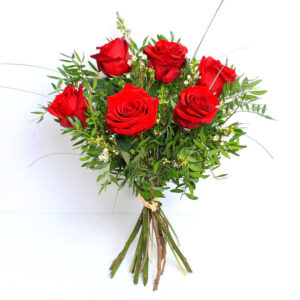
The formal floristry industry began to form in the 19th century, in both Europe and the United States, aligning with the Victorian era. This period witnessed a boom in the popularity of flowers for personal adornment, gift-giving, and home decoration. The Victorian language of flowers (floriography) also significantly contributed to the trend of using specific flowers to express messages and feelings, leading to a heightened demand for floral arrangements.
It was towards the late 19th and early 20th centuries that floristry started to be acknowledged as a professional trade. The opening of floral shops, the advent of floral delivery services (such as the Florists’ Telegraph Delivery, or FTD, established in the U.S. in 1910), and the establishment of professional florist organisations all played parts in the creation of the modern floristry industry. Furthermore, the launch of floral design schools and courses helped standardise the craft and raise the profile of floral designers as professionals.
The Beginning of What We Know of Florists Today
The inaugural floral shops that began offering arranged flowers and delivery services marked a significant turning point in transforming floristry into the structured industry we recognise today. These establishments were pivotal in making floral design a readily available and crucial service for a multitude of occasions, from celebrations to commemorations, further integrating floristry into the cultural and social tapestry of societies.
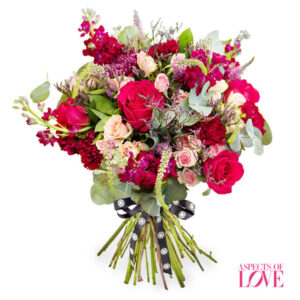
Famous Names in Floral History
Constance Spry (1886–1960) is a figure whose influence is profoundly felt in the annals of floristry. A pioneering British florist, Spry brought about a revolution in the 20th century by adopting a more naturalistic approach to flower arranging. She departed from the stiff, conventional arrangements that were in vogue, integrating a broader array of flowers, including wildflowers and foliage from the garden, into her creations. Her impact extended beyond floristry into the realms of cookery and domestic science, culminating in the publication of several books and the founding of the Constance Spry Flower School.
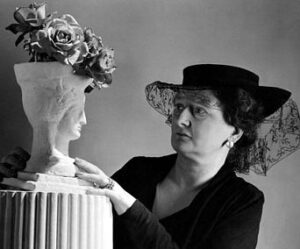
Gertrude Jekyll (1843–1932), though primarily celebrated for her contributions to landscape gardening, also significantly influenced the utilisation of flowers in gardens for cutting and arranging. Her design principles, focusing on colour, texture, and the natural growth patterns of plants, have inspired florists to view the garden as a fountain of inspiration for their arrangements.
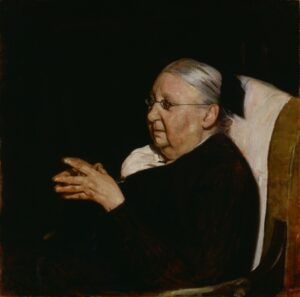
Julia Clements (1906–2010), often dubbed the “Queen of Flower Arrangement,” was another pivotal figure in British floristry. She popularised flower arranging as a pastime through her books, demonstrations, and as a founder of the National Association of Flower Arrangement Societies in the UK. Her efforts were instrumental in elevating the prestige of floristry as a revered art form and craft.
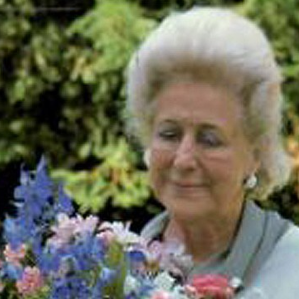
In the United States, Paul Ecke Jr. (1925–2002) is honoured for his contributions to the floral industry, particularly for making the poinsettia synonymous with Christmas. His advancements in plant breeding and marketing turned the poinsettia into an emblem of the festive season globally, demonstrating how florists and growers can influence cultural traditions with flowers.
These florists and horticulturists have each made unique contributions to the development of floral design and the floristry industry. They have demonstrated that creativity, a love for nature, and an entrepreneurial spirit can combine to forge enduring beauty and impact. Through their groundbreaking work, they have inspired generations of florists to investigate the artistic possibilities of flowers and to continue innovating in this constantly flourishing field.
Modern Flowery Greats
Today, there are several celebrity florists who have earned acclaim for their pioneering designs, high-profile clientele, and appearances on television and in the media. These florists are celebrated for their distinctive styles, contributions to the art of floristry, and frequently for their collaborations with celebrities, luxury brands, and at prestigious events. Here are a few notable individuals:
Jeff Leatham is arguably one of the most renowned florists in the world today, famous for his dramatic floral installations that challenge conventional norms. Serving as the artistic director of the Four Seasons Hotel George V in Paris, his creations have drawn a celebrity following and have been highlighted in numerous publications and television programmes. Leatham’s signature style, characterised by bold colours and geometric arrangements, has established him as a favourite among the fashion and entertainment elite.
Eric Buterbaugh, based in Los Angeles, is a florist known for his exquisite floral arrangements that appeal to Hollywood celebrities. Buterbaugh has become the go-to florist for many high-profile events and is revered for his elegant and refined designs. His expertise extends beyond traditional floristry into the fragrance world, with a collection of floral-inspired perfumes.
Philippa Craddock rose to international prominence after designing the floral decorations for the wedding of Prince Harry and Meghan Markle in 2018. Operating from the UK, Craddock’s approach is celebrated for its natural and sustainable methodology, frequently utilising seasonal and locally sourced flowers. Her work presents a fusion of classic elegance with a contemporary twist, earning her acclaim as a sought-after florist for weddings and events.
Preston Bailey is famed for his extraordinary event designs and floral artistry, often converting spaces into elaborate, fantasy environments. With over three decades in the industry and based in New York, Bailey has written several books on event design. His high-profile clientele includes celebrities, royalty, and business tycoons, and his work is noted for its grandiosity and immersive experience.

Kiana Underwood, the founder of Tulipina, an internationally acclaimed floral design studio, is known for her colourful and imaginative arrangements. Underwood’s work stands out for its use of unique flower combinations and vibrant palettes. She has led floral design workshops globally and is praised for her artistic approach to floristry.
These florists have not only established themselves through their exceptional talent and creativity but also by utilising social media and other digital platforms to showcase their work and inspire others. They continue to push the boundaries of floral design, influencing both the industry and floral enthusiasts worldwide.
I started by wondering on the history of it all and also asked how does anyone become a florist. If you are thinking of a career surrounded by bright colours, awesome smells and creativity, here are a few thoughts on how to get going.
Step 1: Education and Training
Although formal education isn’t strictly necessary to become a florist, many aspiring floral designers choose to undertake courses and training programmes to refine their skills. These programmes, provided by vocational colleges, community colleges, and private floral schools, encompass a variety of topics from the fundamentals of flower arranging to more sophisticated design techniques, along with the basics of running a floristry business. Some courses further explore the specifics of various types of flowers, their care requirements, and the principles of colour and design.
Step 2: Hands-On Experience
Experience is paramount in the floristry industry. Many florists begin their careers by working in a flower shop or under the mentorship of an experienced florist. This practical experience is invaluable, offering insights into the day-to-day workings of floristry, including selecting and buying flowers from wholesalers, engaging with customers, and fulfilling orders. Undertaking an apprenticeship or internship can also be an excellent way to acquire hands-on experience while learning the craft.
Step 3: Develop Your Style and Portfolio
As your experience grows, you’ll start to form your own unique style and preferences in floral design. Compiling a portfolio of your work is crucial, as it enables you to display your skills, creativity, and adaptability to prospective employers or clients. Your portfolio can feature photographs of your arrangements for weddings, corporate events, and other special occasions.
Step 4: Certification and Continuing Education
While not compulsory, gaining certification as a florist can bolster your credentials and potentially open up further opportunities. Organisations such as the American Institute of Floral Designers (AIFD) provide certification programmes that evaluate your knowledge and skills in floristry. Continuing professional development is also essential, allowing you to keep abreast of the latest trends, techniques, and industry standards.
Step 5: Launch Your Career
Armed with education, experience, and perhaps certification, you’re prepared to embark on your career as a florist. This might involve working as part of a floristry team in a flower shop, launching your own floristry business, or specialising in events and weddings. Whatever route you choose, the floristry world offers a fulfilling career that blends creativity with the pleasure of delivering beauty and joy to others through flowers.
Becoming a florist is a journey that demands commitment, passion, and a continuous eagerness to learn. Whether you’re attracted to the creative side of designing floral arrangements or the happiness of working with nature, a career in floristry can be deeply rewarding and incredibly varied.
